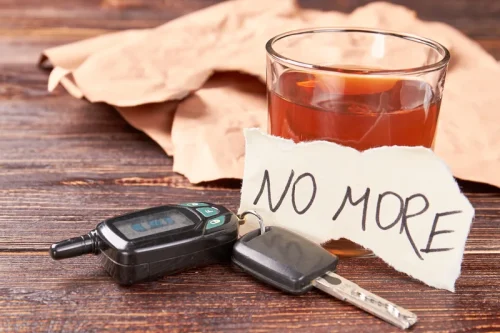
Risky behavior is not always viewed as a negative side effect of drinking, and it appears that those who favor risk and aggression will more quickly progress to alcohol use onset. Finally, given the changing demographic landscape of the United States, including a larger and more diverse immigrant population, interventions and treatment options should also reflect the growing needs of certain groups. However, studies have found that focusing only on changing social norms is insufficient, and that broader interventions that influence multiple levels of an individual’s environment, such as family and schools, may have greater impact.

J. Am. Acad. Child Adolesc. Psychiatry
It should not be used in place of the advice of your physician or other qualified healthcare providers. They have an average age of 38 years, began drinking at almost age 17, and developed alcohol dependence at an average age of 32 years. Intermediate familial alcoholics drink https://ecosoberhouse.com/ on an average of 172 days a year, consuming five or more drinks on 54% of those days with a maximum of 10 drinks. About 75% have never been married, 36.5% are still in school, and 54% work full time.

5. Religious Influence
This effect apparently was specific to alcohol because repeated chronic alcohol exposure and withdrawal experience did not produce alterations in the animals’ consumption of a sugar solution (Becker and Lopez 2004). At a young age, the parenting authority plays an important role, and as discussed earlier, the age of the first drink and the early access of alcohol play important roles in developing a proper awareness and drinking patterns. For example, Mathialagan et al. 53 used AUDIT scores and surveys to collect data from 150 college students; the findings indicated that increased authority did not impact the consumption patterns significantly, while permissive authority was found to decrease the consumption patterns. Another study conducted by Dickens et al. 54 used survey data from 23,163 rural adolescents and found that increased parental permissiveness increased the likelihood of alcohol use the previous month, which was opposite to the earlier study. Both studies did not include sample size justifications, and they did not measure and account for confounders such as early access or age of onset. However, the latter study used data from a larger data collection effort, which may indicate blinded assessors, which gives more strength to the latter study.
- Lower levels of ethnic identity may be one explanation for these differences across Asian subgroups.
- This is a saturated model that we did not attempt to further simplify although we do test whether all C paths can be eliminated from the model.
- Interestingly, although the moderate and moderate-high classes differed in severity (26% versus 50% met dependence criteria), the likelihood of treatment was similar between the classes.
- The majority of individuals in the affected classes did not receive or perceive a need for treatment.
- Wine contains around 12% pure alcohol per volume1 so that one liter of wine contains 0.12 liters of pure alcohol.
Starting at a Young Age
For drink frequency, our 5 categories were 1 to 3, 4 to 9, 10 to 15, 16 to 27, and 28 to 30 days per month in males and 1, 2 to 3, 4 to 7, 8 to 14, and 15 to 30 days per month in females. For regular quantity, these categories were 1 to 2, 3, 4 to 5, 6 to 9, and ≥9 drinks/day for males; and 1, 2, 3, 4, and ≥5 drinks/ day for females. For maximum quantity, these categories were 1 to 5, 6 to 9, 10 to 12, 13 to 20, and ≥21 drinks/day for males and 1, 2 to 3, 4, 5 to 6, and ≥7 drinks/day for females. For drunk frequency, using the response options listed earlier, our categories were 1 to 2, 3 to 5, 6 to 7, 8, and 9 to 11 for males and 1, 2, 3 to 4, 5 to 7, and 8 to 11 for females. Alcohol Dependence (AD) in DSM-IV is a complex construct that reflects a range of neurobiological, cognitive, and behavioral symptoms.

National Institute on Alcohol Abuse and Alcoholism (NIAAA)
- It includes a discussion of macrolevel factors, such as advertising and marketing, immigration and discrimination factors, and how neighborhoods, families, and peers influence alcohol use.
- The findings of this study do not support the use of alcohol abuse as a method to screen individuals for alcohol dependence.
- Another study conducted by Dickens et al. 54 used survey data from 23,163 rural adolescents and found that increased parental permissiveness increased the likelihood of alcohol use the previous month, which was opposite to the earlier study.
- In general, the harmfulness of alcohol consumption can be related to the total volume of irregular heavy drinking 5,6.
Given the predominance of the twelve-step recovery narrative in discussions regarding the best ways to provide addictions treatment 12,13,14,15, it is important to establish the proportion of former heavy drinkers who might not identify with this approach to treatment provision. This is because treatments that match alcohol consumers’ perspectives on the nature of their problem may prove more attractive to those hesitating about seeking care 11. Theoretically, these results raise questions about the need for detailed measures of the DSM-IV criteria for AD such as tolerance, dependence, narrowing of behavioral focus and use despite persistent problems. Our results suggest that considerably simpler consumption-like measures for the period of heaviest drinking can index the same genetic risk factors that predispose to the subtler construct of dependence as it is imperfectly assessed by structured clinical interview.

Similar results have been reported in mice, with voluntary alcohol consumption assessed using a limited access schedule (Becker and Lopez 2004; Dhaher et al. 2008; Finn et al. 2007; Lopez and Becker signs and symptoms of alcohol dependence 2005). Likewise, studies using operant procedures have demonstrated increased alcohol self-administration in mice (Chu et al. 2007; Lopez et al. 2008) and rats (O’Dell et al. 2004; Roberts et al. 1996, 2000) with a history of repeated chronic alcohol exposure and withdrawal experience. Further, the amount of work mice (Lopez et al. 2008) and rats (Brown et al. 1998) were willing to expend in order to receive alcohol reinforcement was significantly increased following repeated withdrawal experience. This suggests that the reinforcing value of alcohol may be enhanced as a result of experiencing repeated opportunities to respond for access to alcohol in the context of withdrawal.
- Heavy alcohol consumption and extreme weekly binge drinking have a larger effect on cognitive decline in an adult’s life 15.
- This article discusses alcohol dependence, alcohol abuse, and the key differences between them.
- In males, the liability to AD was most highly correlated with maximum quantity while in females the highest correlation was seen with drunk frequency.
- Thus, the second transition was the period in years from the first drink to the start of the first heavy drinking period, the third transition was the number of years of heavy drinking to starting remission, and the fourth transition was the years in remission until relapse to heavy drinking levels.





